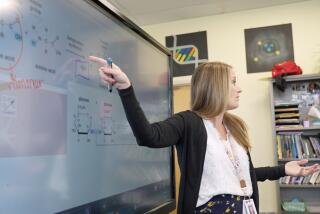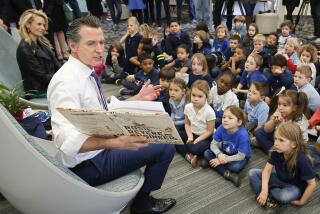Acquiring Language: Two Views
- Share via
We teach the children to comprehend the text they read and write, to process their knowledge, to synthesize the text with their experiences. The timetable for transition into literacy in English is based on criteria such as fluency in reading in their first language and fluency in English. I know of several cases of end-of-the-year first-graders starting to transition. This occurs frequently at second grade; it is the thrust of the work for our third-grade bilingual teachers.
So why do we have bilingual settings for children beyond third grade? Not every person learns at the same rate, and for the children who haven’t attained literacy skills in their first language, they might need that extra time for transitioning. And let’s not forget all the children who are new immigrants and don’t have the benefit of having learned English in previous years.
God bless my colleagues at fourth and fifth grades and beyond who teach new immigrants and migrant children who have missed out entirely on their formative years of education. We want the children to succeed in reading and writing in English. And sometimes that means first teaching those skills in a language they understand, then bridging to the same skills in English. But there is no magic quick fix, as Ron Unz and his proposition would have us believe.


